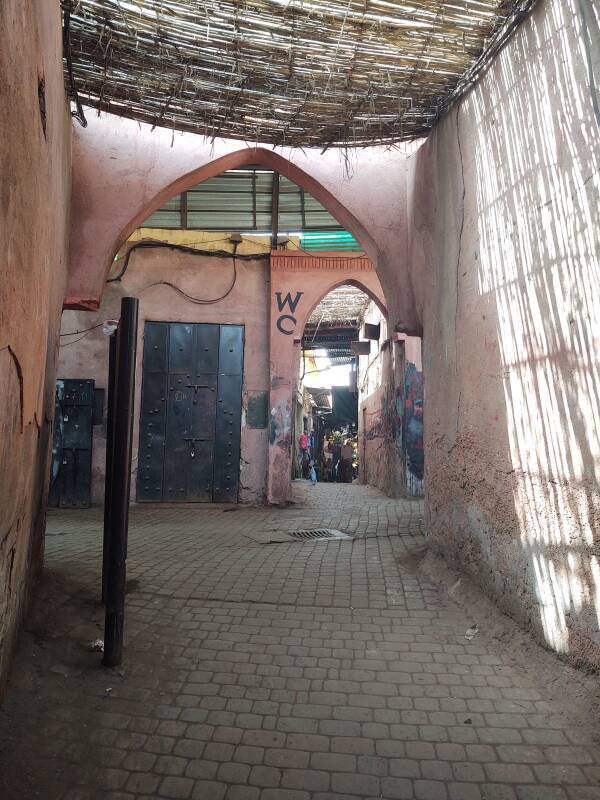
Qubba el-Ba'adiyyin Ablutions and Latrine Pavilion
Qubba el-Ba'adiyyin, an Almoravid Dynasty Ablutions Pavilion and Waterworks Complex in Marrakech
The Qubba el-Ba'adiyyin
is part of the overall complex of the
Ben Youssef mosque
in Marrakech.
It was one of the first fountains in the city.
It's about nine hundred years old,
having been completed in either 1117 or 1125.
A qubba is a domed structure.
This one contains a large basin for ablutions,
for ritually cleaning yourself
before entering the nearby mosque.
It's in a complex of cisterns, fountains, latrines,
and other water-related infrastructure.
Now it's the last remaining example of architecture
from the Almoravid dynasty in Marrakech.
Notice the minaret in the background,
and how the qubba seems to be down in a hole.
Read on for the explanations!
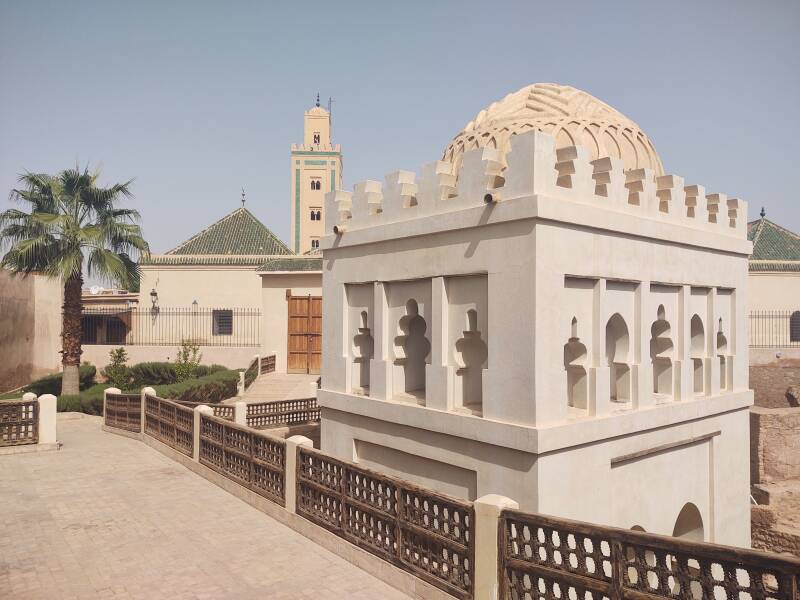
The Almoravid Dynasty
Almoravid followed by Almohad. Conflicting dynasties with confusingly similar names.
The Almoravid dynasty ruled an empire spanning today's Morocco and southern Spain from the 1050s until it fell to the Almohads in 1147. Its chieftain Abu Bakr ibn Umar founded Marrakech in 1070 to serve as its imperial capital.
Abbāsid Caliphate Water Storage JarsThe Almoravid rulers never claimed the title of Caliph. Instead, they styled themselves Amir al-Muslimīn or "Prince of the Muslims" and formally accepted the authority of the Abbāsid dynasty Caliphs in Baghdad.
That was a cautious move by the Almoravids. Moulay Idress I was an earlier Moroccan leader. He was killed in 791, apparently poisoned by an assassin sent from Baghdad by Harun al-Rashid, the Abbāsid Caliph.
Things went well for the Almoravids, for a while. Their empire grew to encompass all of today's Morocco and extending significantly to the east and south, plus more than the southern half of the Iberian peninsula, known as al-Andalus back then and Spain and Portugal today.
The Almoravids were a Berber tribe from the desert. Other people referred to them as al-mulathimun or "the veiled ones" because the men wore veils covering their faces below the eyes. It was practical for the blowing dust in the desert. The Almoravids insisted on wearing the veil everywhere, including throughout their new capital city, because it marked them as outsiders in the urban setting. Everyone else was forbidden to wear this puritan uniform, to make it clear who was the ruling class and also who was the most pious.
Tashfin ibn Ali, the sixth Almoravid Emir, fought the Almohads along the Mediterranean coast. He was besieged in 1145 and planned to escape by sea. He burned his military encampment and was on his way to join an evacuation fleet when he fell off a cliff and died.
His son Ibrahim ibn Tashfin was still an infant, but he was proclaimed ruler once news of his father's death reached Marrakech.
His uncle Ishaq ibn Ali, brother of the father Tashfin ibn Ali, quickly replaced the infant Emir as the eighth and last Almoravid Emir. But just very briefly.
The Almohads captured Marrakech in April 1147, killing Baby Emir and Uncle Emir and immediately setting out to erase the legacy of the Almoravids in Marrakech. The Qubba el-Ba'adiyyin is the only significant example of Almoravid architecture remaining in Marrakech, other than a few short segments of the outer city wall.
The Almohads were also a Berber tribe, but they made a point of mocking the Almoravids' veil as a sign of effeminacy and decadence.
The Almohads extended their empire until they controlled all of the Maghreb to a point well east of Tripoli and slightly east of Sicily and Malta by the 1150s, and north through all of Muslim Iberia by 1172.
Visiting the Qubba el-Ba'adiyyin
Let's get a ticket and enter. The national government now includes the script used to write Berber, now an official national language, along with Arabic and French.
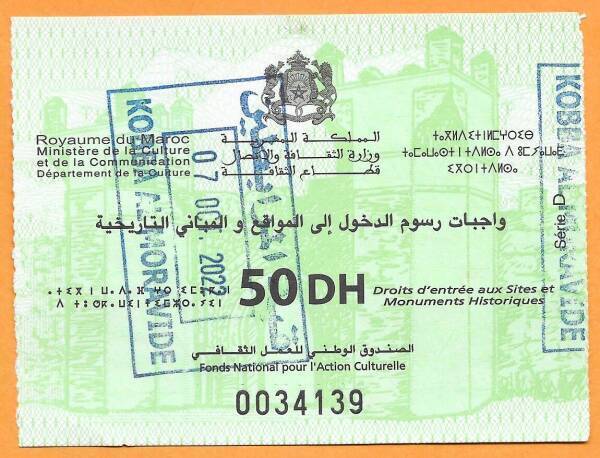
As always with Arabic, there are many ways that qubba might be rendered for speakers of western European languages — qubba, qoubba, kobba, kuppa, and so on.
There is a one-room museum as you enter the site. It has several interesting objects and some helpful diagrams and explanations. One of the objects is this ablutions basin.
Islam requires carefully cleaning your hands, face, and feet before entering a mosque, and so a mosque will provide a mîdhâ, a facility for performing the ritual ablutions. The qubba is associated with the Ben Youssef mosque, which was the largest mosque built in the Almoravid empire. The growing city of Marrakech extended out around it.
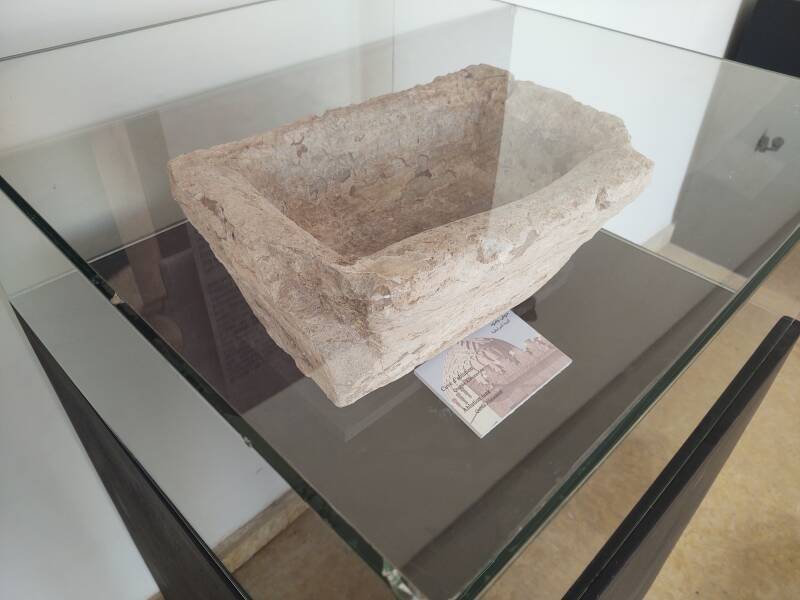
The conquering Almohads wanted to wipe out all traces of the Almoravids, and the Almohad Caliph announced that the existing Almoravid mosque was not aligned with the proper direction of prayer. They demolished it and built a new large mosque well to the southwest. But the maze of souqs surrounding the original mosque was already established, and urban activity remained here.
The Saadian dynasty of the 16th century patronized this area, rebuilding the Ben Youssef mosque and building a new madrasa or theological college nearby. The mosque fell into ruin through the 17th and 18th centuries, and was completely rebuilt in the early 19th century. The minaret you see today was finished in 1819 or 1820.
Abbāsid Caliphate Water Storage JarsThere are fragments of several large water storage vessels. You can compare these to what I've seen of Abbāsid Caliphate (750–1258) vessels.
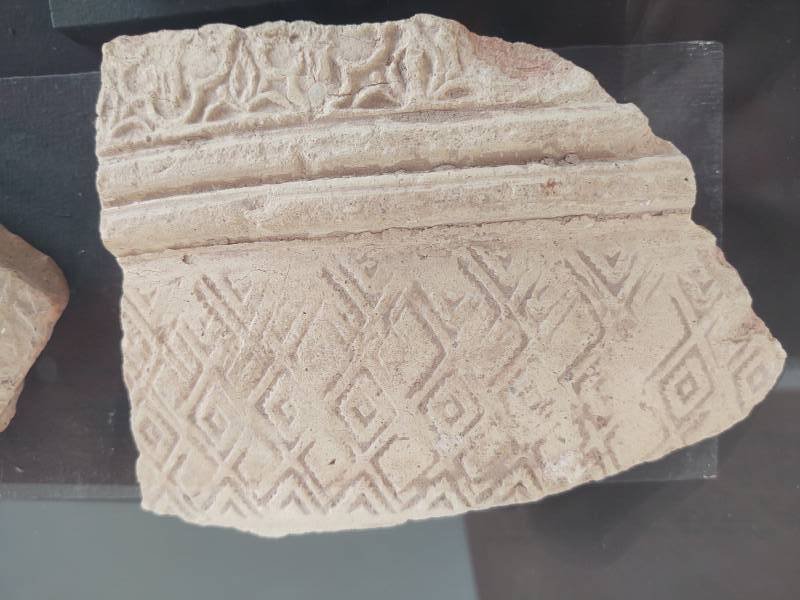
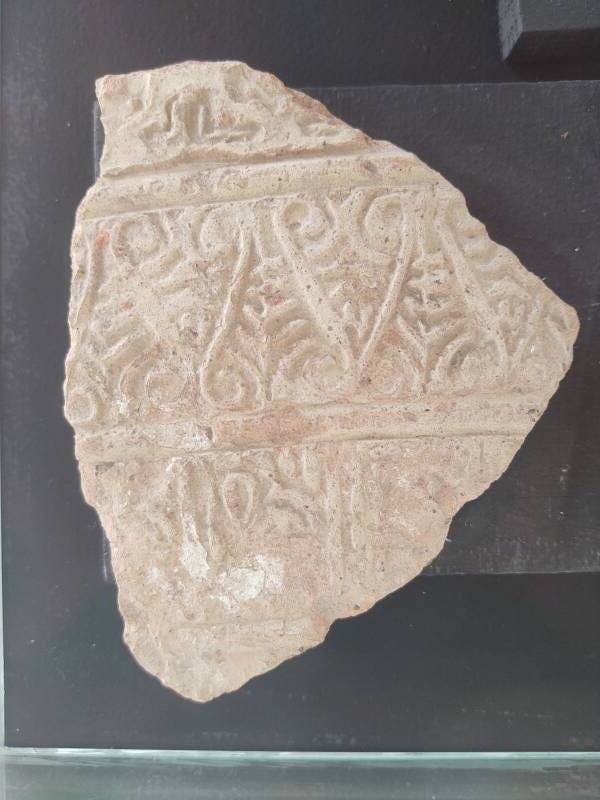
They have some terracotta water pipes that had been in service in the local infrastructure. Compare those to the terracotta pipes the Minoans designed, built, and installed at Knossos, Phaistos, Agia Triada, Roussolakkos, and elsewhere in Crete during the late Bronze Age in the early second millennium BCE.
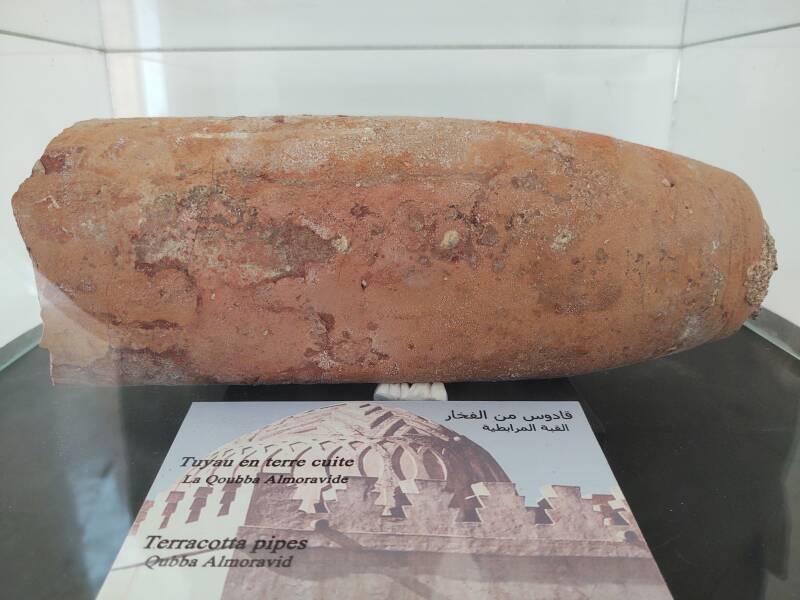
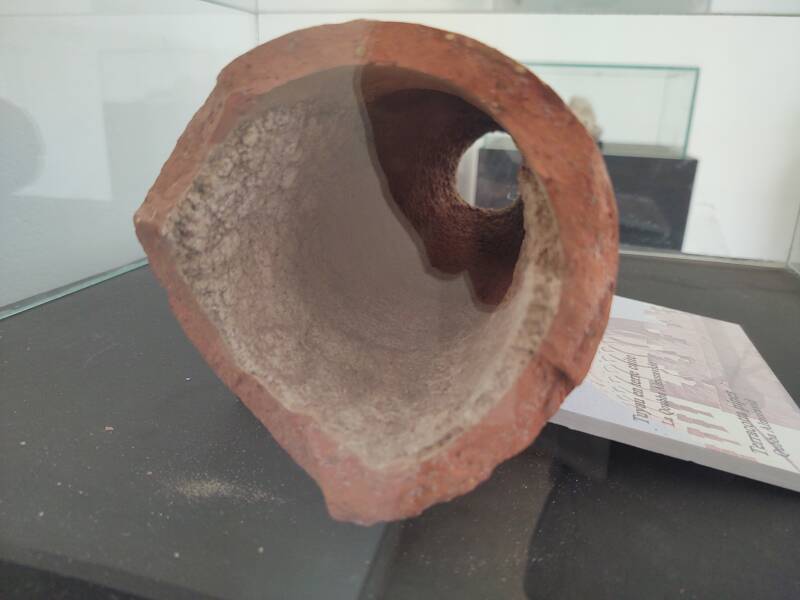
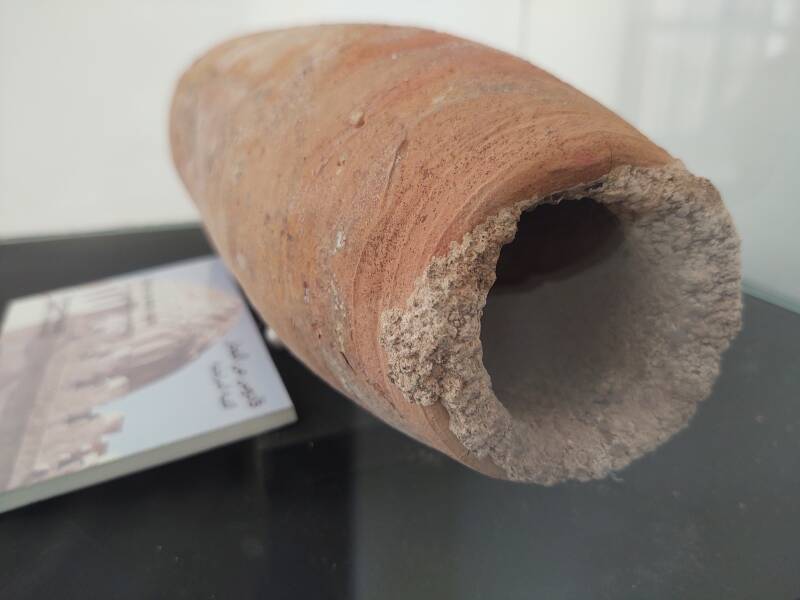
The Qanat or Khettara System
Persia was home to one of the world's oldest civilizations, starting with the Elamite kingdoms in the fourth millennium BCE.
Around 3,000 BCE they developed a water transportation system known as the qanat or the qanāh in modern Arabic, kārīz or kārēz in modern Persian or Farsi. It's a gently sloping tunnel connected to the surface via a series of vertical shafts like wells, which are used for maintenance. A qanat is resistant to natural disasters such as earthquakes and to intentional destruction in war. It can transport water over a long distance with minimal loss to evaporation even in a hot, dry climate, with no need for pumping.
The technology spread both east and west, picking up a variety of names. By the time it reached Morocco in the far northwestern corner of Africa it was called a khettara.
A qanat or khettara system supplied this complex.
A qanat would be used with a wind tower. That's a structure similar to a chimney, with doors at the top of its four faces. You would open the door on the downwind side, and the wind tower would draw cool air out of the qanat into the house.
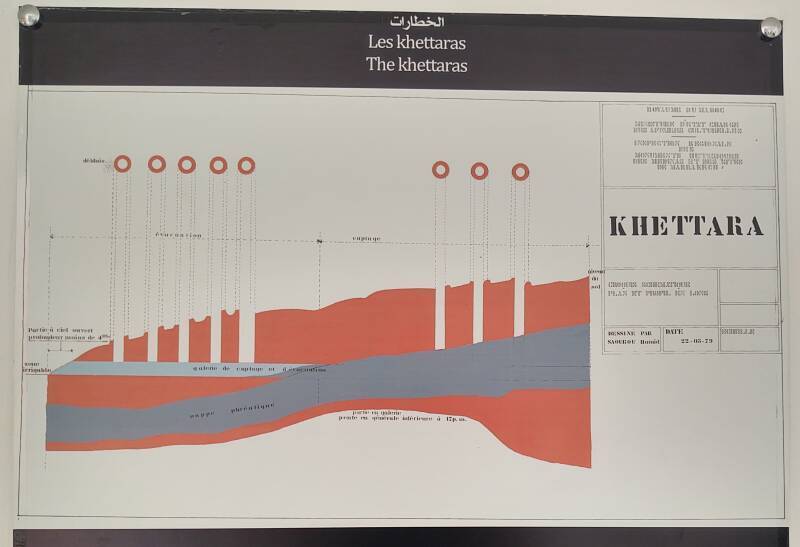
Qanat is one of the many Arabic words Frank Herbert used for his Dune books, although he refers to it as "an open canal" rather than a proper qanat or khettara.
Well, maybe in the later books in the series, but not on the hyper-arid planet of Arrakis described in the original.
The Qubba
The conquering Almohads had demolished the nearby Ben Youssef mosque after they captured Marrakech in 1147. This associated ablutions facility was abandoned. By the time the Saadians rebuilt the mosque in the 15th century, the qubba was largely forgotten.
By the beginning of the French Protectorate in 1912, the local ground level had risen by about six meters by the buildup of dirt and debris over the century. The ruined qubba was almost entirely buried.
French archaeologists cleared away the built-up rubble and restored the qubba. Here is how it looked in 1954, just two years before the end of the Protectorate:
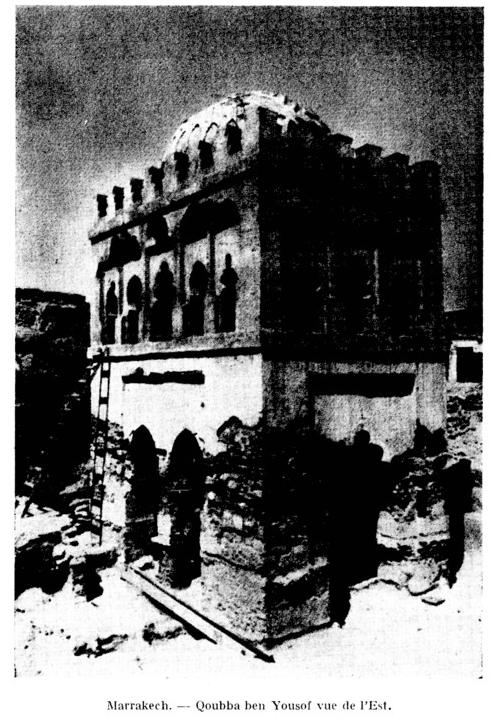
From " Une qubba almoravide a Marrakech", Jacques Meunié, Comptes rendus des séances de l'Académie des Inscriptions at Belles-Lettres, 1954, pp 226–233.
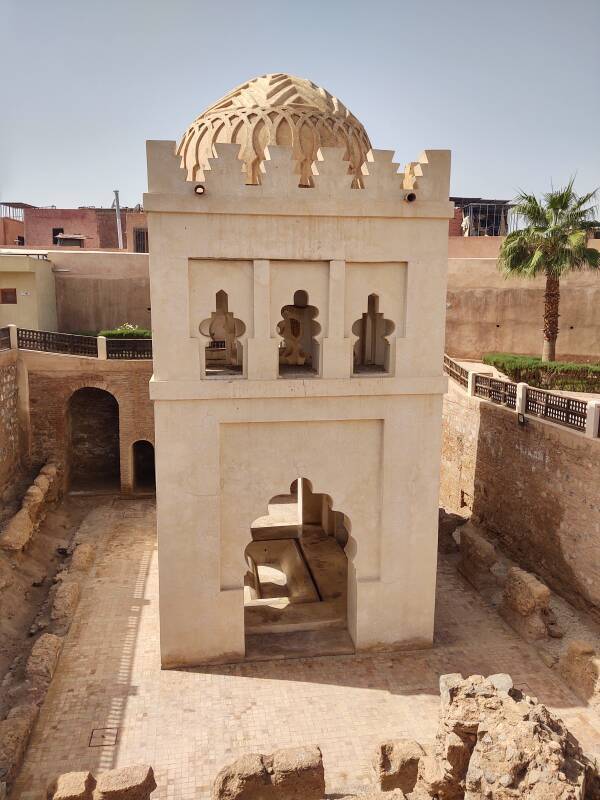
By the time I visited in 2022, it had gone through two more significant restorations and appeared as you see above. It has been heavily restored! The Moroccan Ministry of Culture had signed an agreement with the Omar-Benjelloun foundation in 1999, and they restored the qubba and the nearby Ben Youssef madresa. Then the Ministry of Culture carried out another restoration in 2019.
The recent restorations have the qubba looking like new. They have also cleared away debris covering associated water infrastructure that has been left in a more original state.
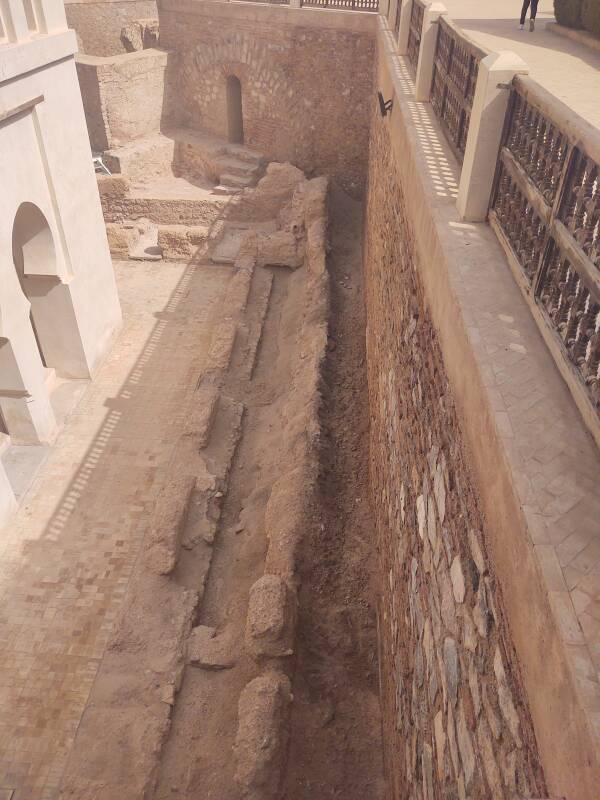
The large central ablutions basin is made from marble.
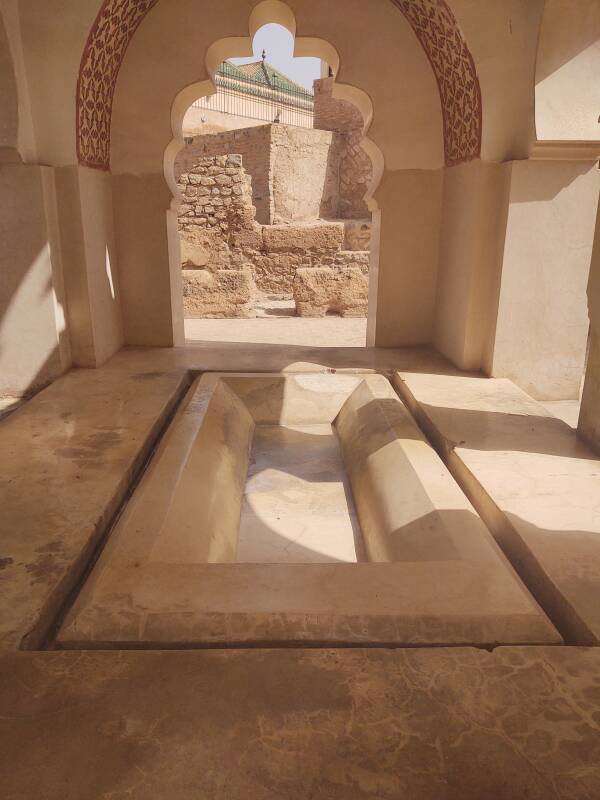
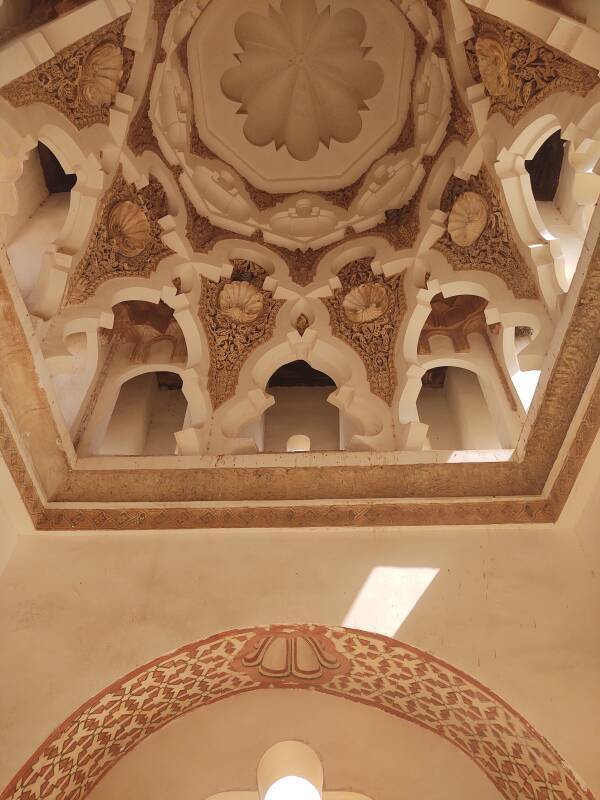
The elaborate decoration on the interior of the dome is a unique example of Almoravid design in Marrakech. The Almoravids had adopted some of the intricate design that had already been used in al-Andalus, as they brought Muslim, Christian, and Jewish artisans to North Africa. They added further ornamental techniques from as far east as Baghdad.
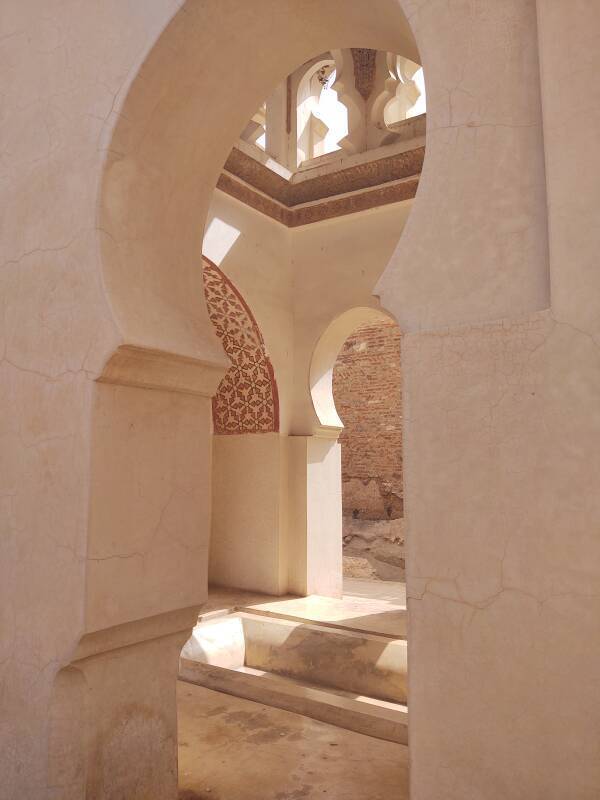
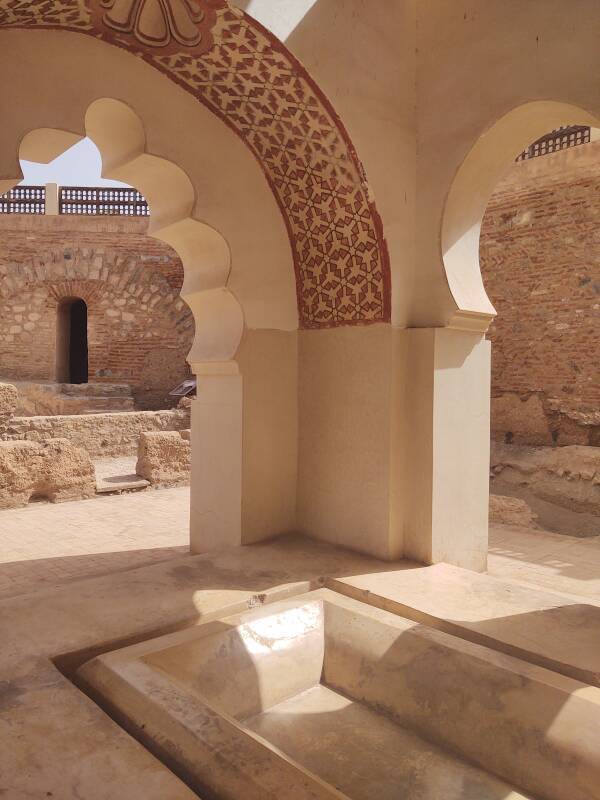
The Latrines and Lavatories
The qubba complex included large public latrines.
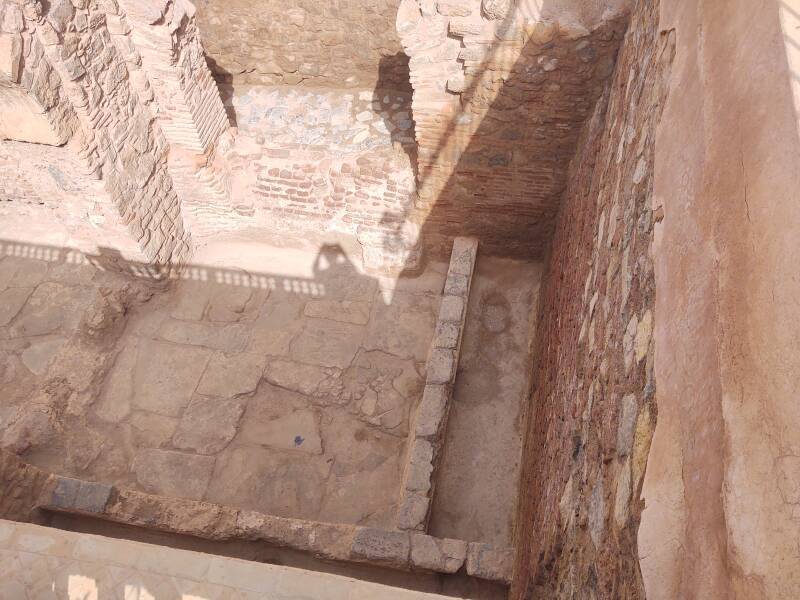
The same khettara based water supply flushed away the waste.
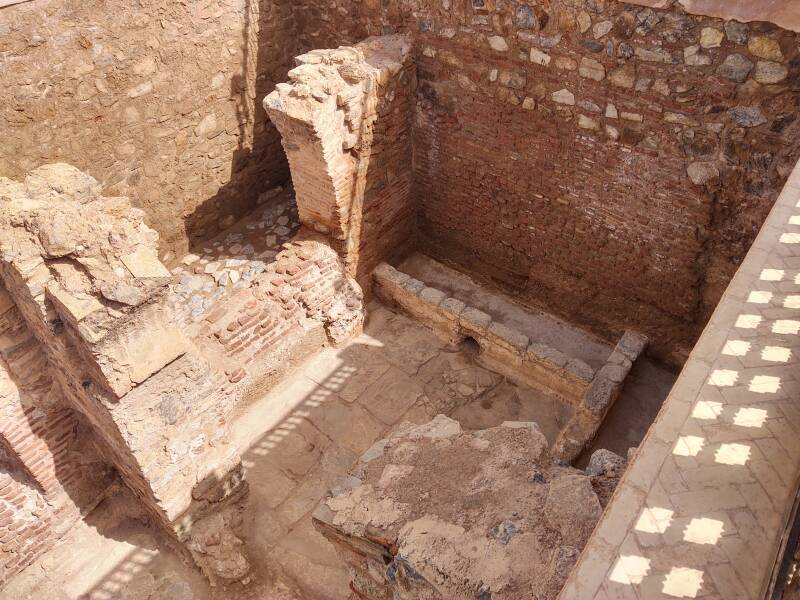
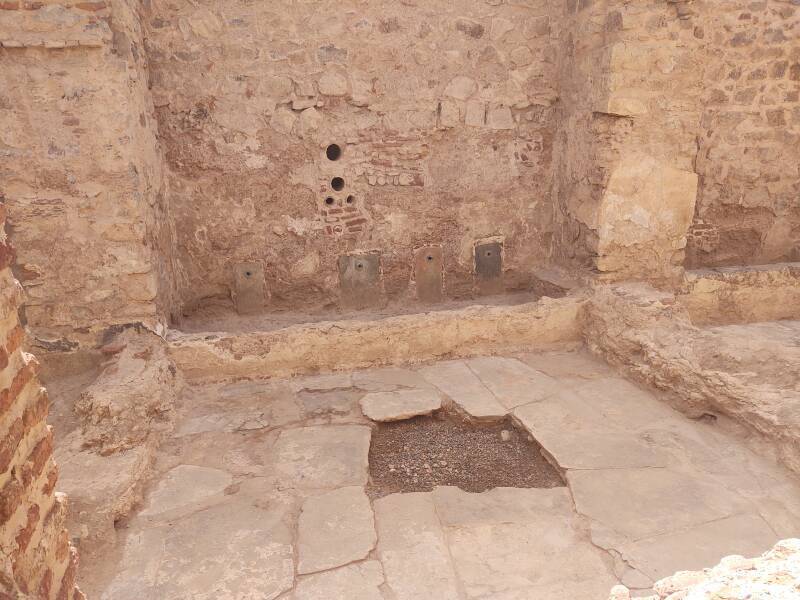
A distributed system of pipes provided the flushing water.
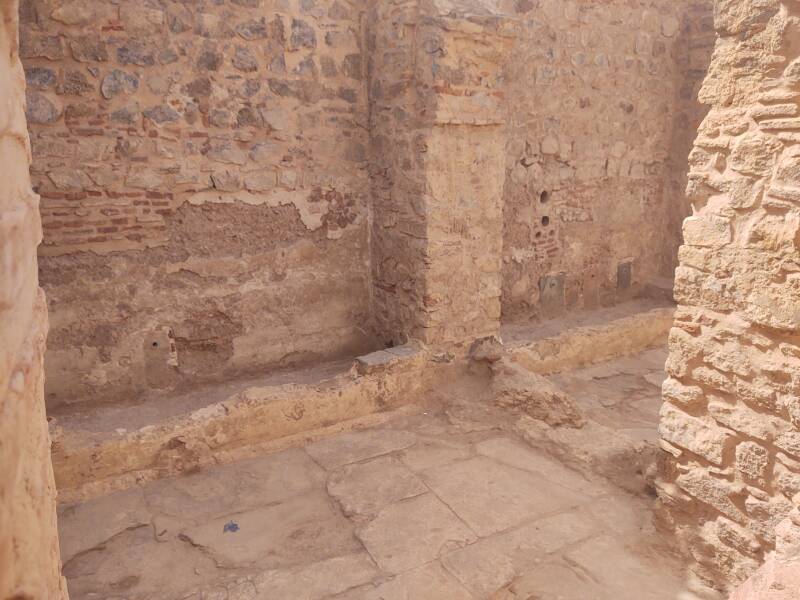
The Cistern
All the ablutions basins, fountains of drinking water, and latrines required quite a bit of supply surge capacity.
That was provided by a large cistern, which the traveler to toiletological sites can also visit.
All this had been completely buried until the French archaeologists cleared away the accumulated debris.
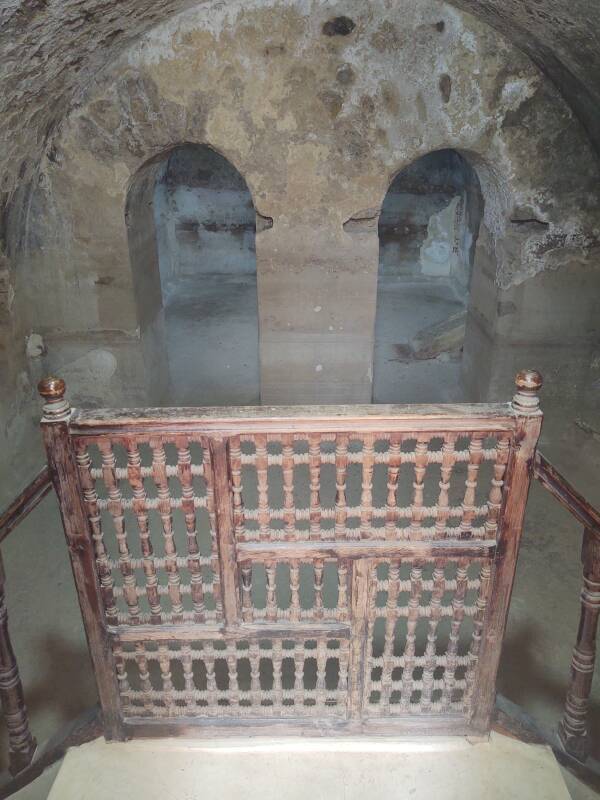
The cistern has two large chambers with arched roofs, connected by two arched doorways.
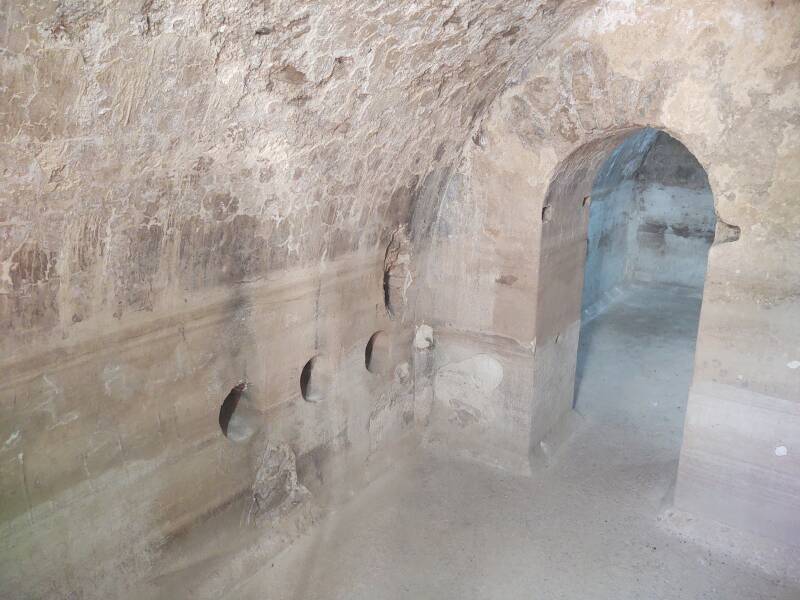
Large holes in the walls feed the supply lines running to fountains and latrines.
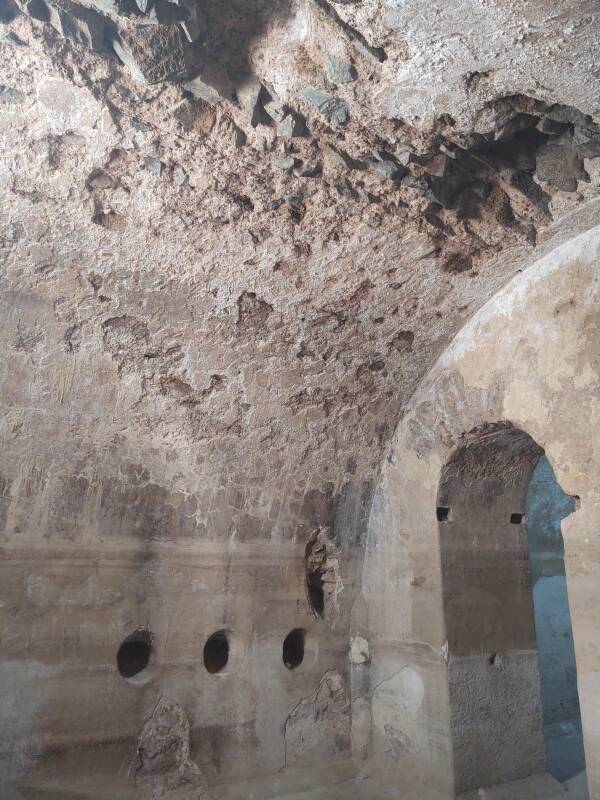
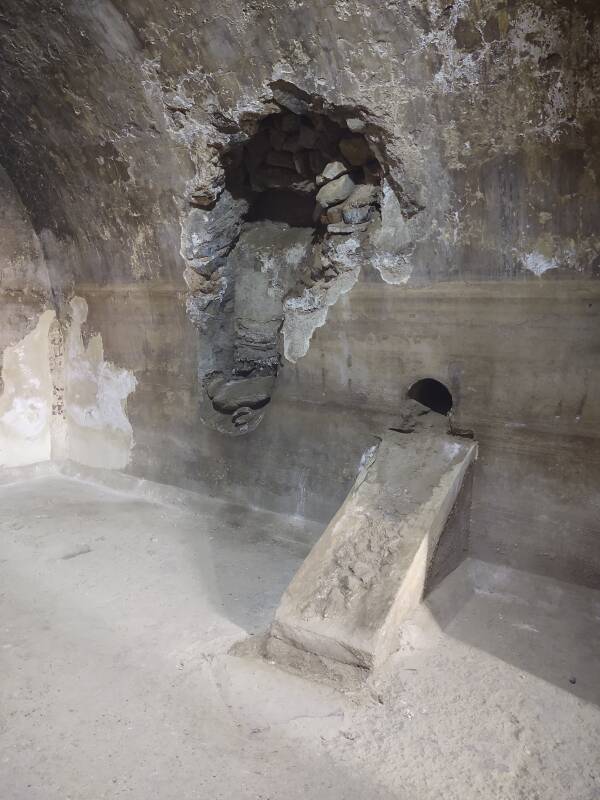
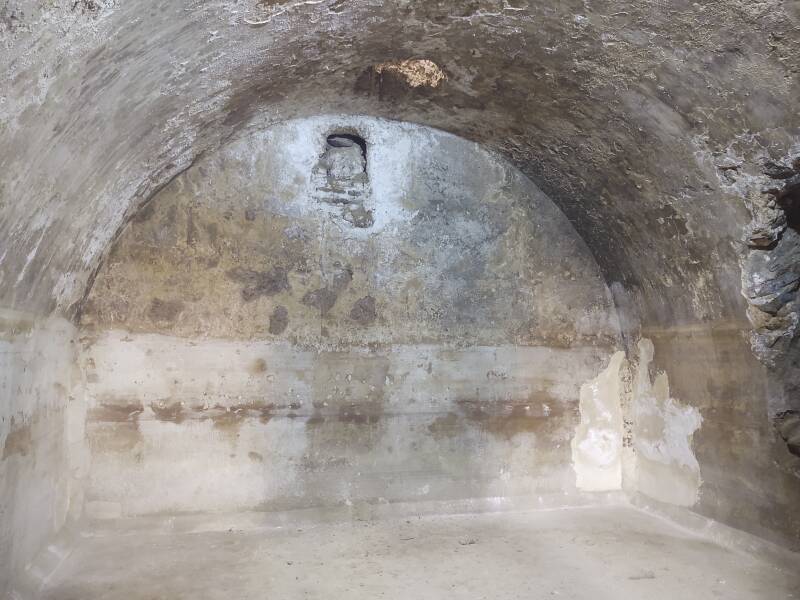
The Modern Facilities
Today's visitor can use nice restrooms, supplied by the modern water system of Marrakech. No qanat or khettara is involved.
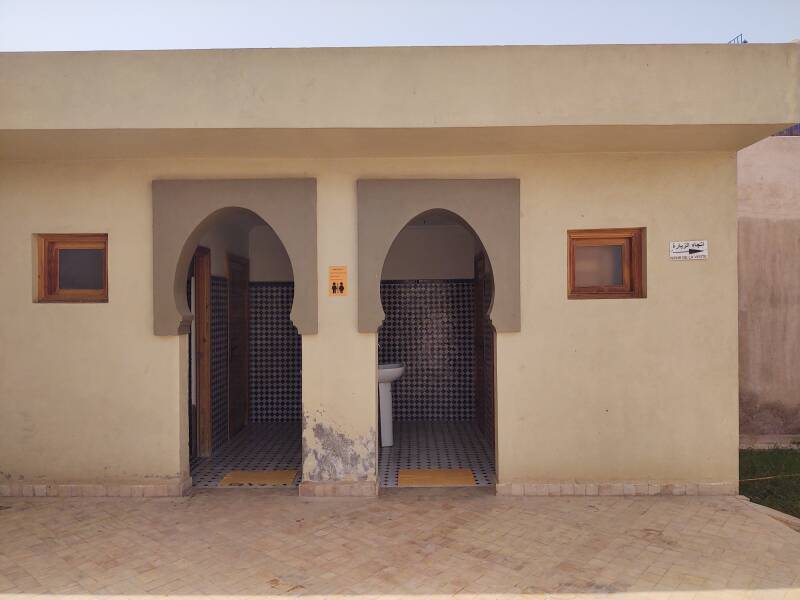
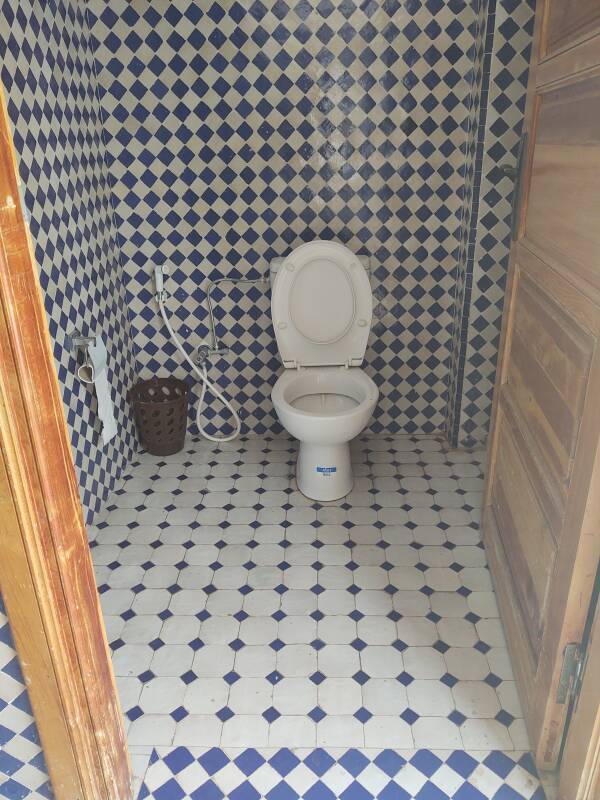
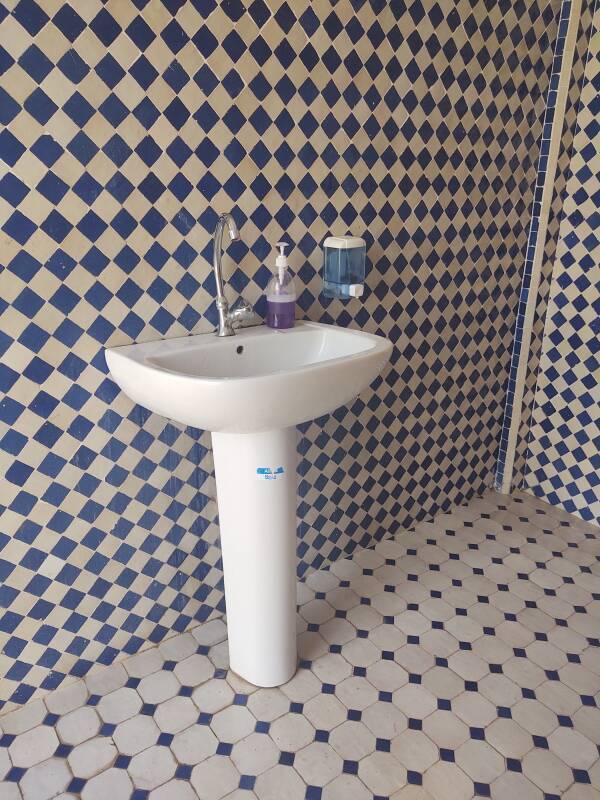
Returning Through The Medina
Returning through the medina to where I was staying, I passed this sign to a public restroom.
